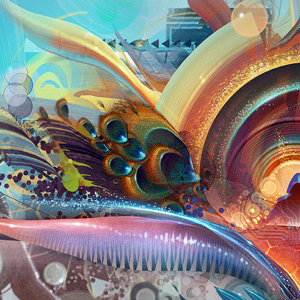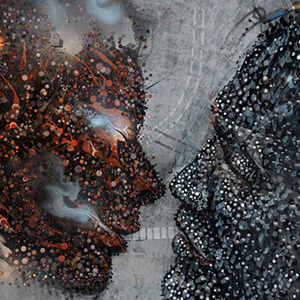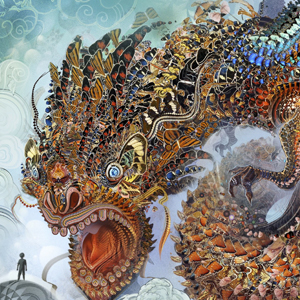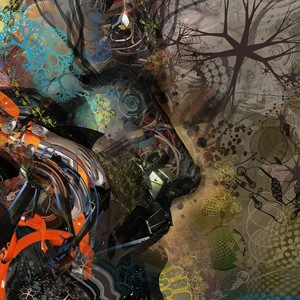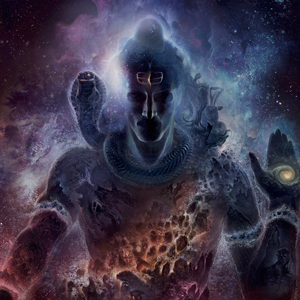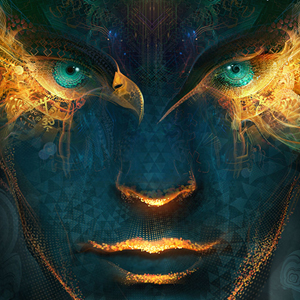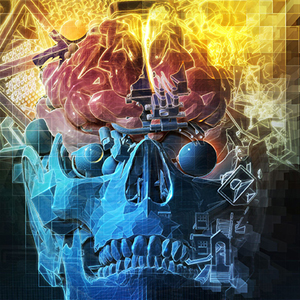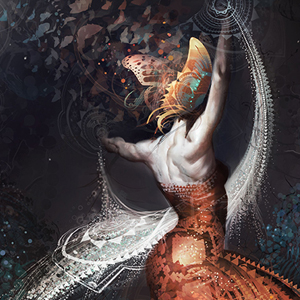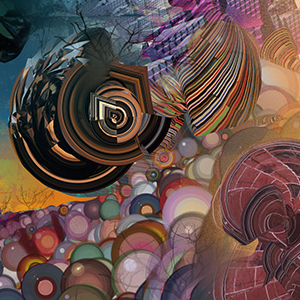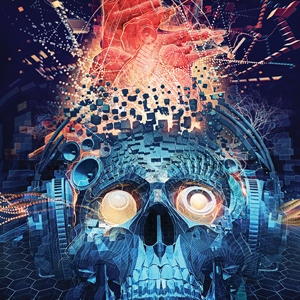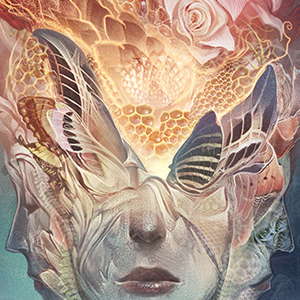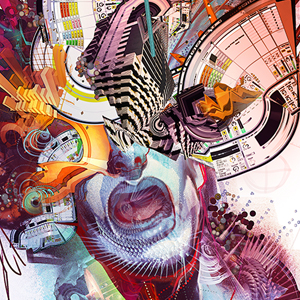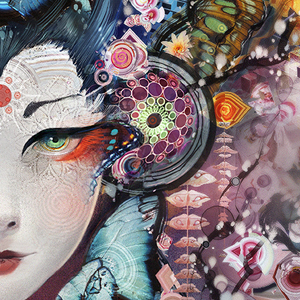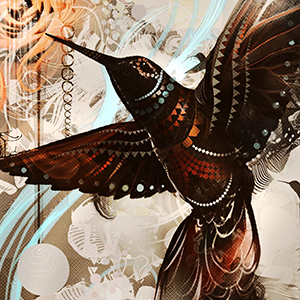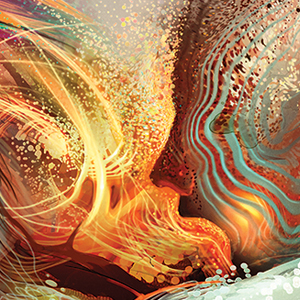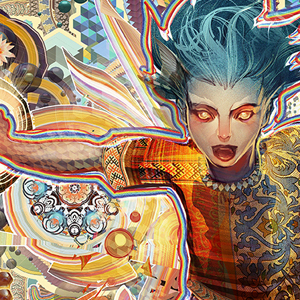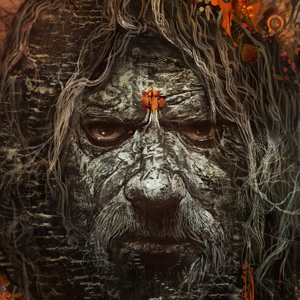|
I have seen things in this life that I am incapable of translating into words. In my practice I have visited realms where the imagination ends, and the terrifying beauty of infinity unfolds over and over again. If I could distill into words exactly what motivates me to create the art that I make than it would not be worth making it. Instead I have chosen the Pen. Honestly I don’t know why I make this art, or what compels me to keep creating it; it’s a mystery I intend to pursue for the rest of my life, and each image brings me closer to the Ultimate Truth.
|
Android Jones | Does Android Jones Dream of Electro-Mineralist Sheep?
Android Jones’ pictorial work is one strain of a larger project that he and his wife call “Electro-Mineralist Art.” Moving “beyond the traditional organic vegetable and animal technologies of pencils, ink, and brushes” (Biographical Statement), Jones takes up emergent technologies that are crystalline, metallic, electronic and digital in their materiality and aesthetic feel – implicating a historical scheme that echoes the integral view of planetary evolution from physiosphere to biosphere to noosphere to theosphere; where the techno-media of exhibition artworks have been by and large, as the artist says, bound to or associated with the biologic. For a post-postmodern art of high noospheric and theospheric expression, Jones instead upgrades to more resonate noospheric vehicles; where the crystalline or “mineralist” – proper to the physio sphere -- is recovered as a marginalized inorganic principle for the artistic celebration of the energies of Life. The content of these marvelous works ranges vastly from the kosmic to the micro, from tantric beloved to sacred civics, from expansions of consciousness to reconfigurations of our three bodies. The pictorial syntax is at the very least proper to a teal register; a collage mode descending from synthetic cubism (on which see “Part Five: Encoding Stages and States” in Looking at the Overlooked). Subtle radiance and causal voids abound throughout. Honoring the history of art – the mystical projects of the later Dali come to mind -- Jones taps into pre-modern, modernist, and post-modernist aesthetic idioms, advancing an Electro-Mineralist Art as Integral Alchemy.Michael Schwartz |
|

